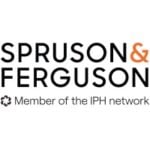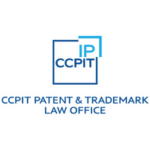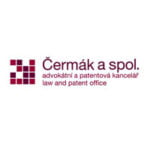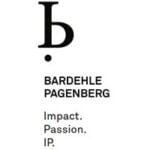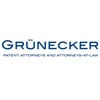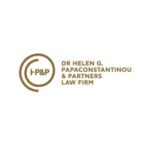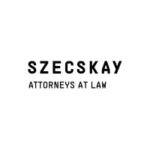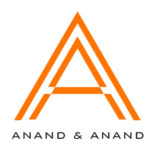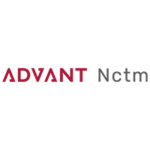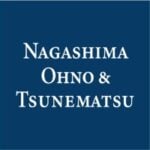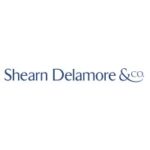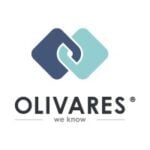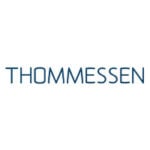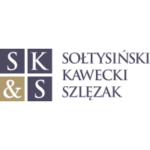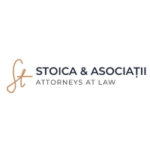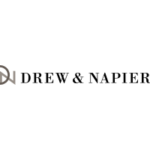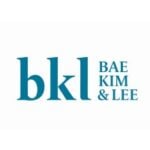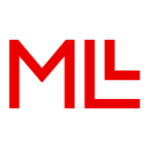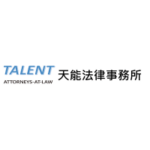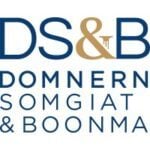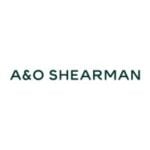-
What is the forum for the conduct of patent litigation?
Patent infringement litigation is conducted at any District Court having local jurisdiction. There are six District Courts (Tel Aviv, Jerusalem, Central-Lod, Haifa, Nazareth and Be’er Sheva). In many cases, all of the District Courts will have local jurisdiction and the plaintiff will be able to choose in which District Court to file the claim.
A validity challenge can be made as part of a defence against patent infringement (‘indirect attack’). The validity challenge as well as the infringement issues will be heard by the District Court. As an alternative to challenging validity as a defence to infringement in District Court proceedings, the defendant can challenge validity at the Patent Office, either following allowance (during a non-extendable period of three months; pre-grant opposition) or after patent grant (no limitation period; revocation proceedings). Appeals on Patent Office decisions can be filed at the Tel Aviv or Jerusalem District Court.
There are no specialized patent chambers in any of the District Courts. However, patent cases are often assigned to judges with previous experience in patent matters. All in all, the majority of patent litigation is conducted at the Tel Aviv District Court and there are obvious advantages in bringing proceedings before this relatively experienced court. However, various factors may be relevant depending on the circumstances of each case and choice of the most suitable District Court should be made on a case-by-case basis.
-
What is the typical timeline and form of first instance patent litigation proceedings?
As noted above, infringement and invalidity issues are not bifurcated in patent infringement proceedings. When validity is directly challenged at the Patent Office during pending court proceedings, the Court will decide whether the Patent Office revocation proceedings will proceed and whether to stay the court proceedings pending a decision by the Patent Office.
Other than in exceptional circumstances, there are no preliminary ‘Markman’ hearings to determine claim construction in the framework of patent litigation proceedings. In addition, in court proceedings usually infringement and invalidity are adjudicated together. However, in certain circumstances courts may prefer to reach a decision on invalidity before hearing and deciding infringement (e.g., in order to avoid potentially unnecessary disclosure of trade secrets bearing on infringement) or vice versa. While there are exceptions, liability and damages issues are normally bifurcated.
First instance patent litigation proceedings are usually concluded within two to three years but may sometimes be longer depending on the complexity of the matter. Patent Office revocation proceedings may be somewhat shorter.
-
Can interim and final decisions in patent cases be appealed?
Final Patent Office decisions are appealable to the Tel Aviv or Jerusalem District Court as of right. Interim Patent Office decision are appealable the Tel Aviv or Jerusalem District subject to obtaining leave to appeal. Further appeal from the District Court as an appellate judicial instance to the Supreme Court is possible subject to obtaining leave but such leave will only be granted if the matter raises an issue of significant legal importance. Final decisions of the District Court, sitting as a first instance court, are appealable to the Supreme Court by right. Interim District Court decisions are appealable to the Supreme Court subject to obtaining leave to appeal. Notwithstanding the above, interim decisions on various procedural matters may be appealable only together with the final decision.
Patent litigation appeals may take 1 to 2 years until the matter is heard, briefed and a decision is given. The default rule is that patent litigation decisions are not stayed pending appeal. However, the matter is discretionary and while a monetary award may be stayed only in exceptional circumstances, the bar for staying injunctions or patent revocations is lower. Injunctive remedies which could create irreparable harm may be stayed if the appellate court is convinced that the appeal has good prospects. Orders for account of profits may also be stayed pending the outcome of the appeal if they are involved in divulging trade secrets and confidential information to the plaintiff.
-
Which acts constitute direct patent infringement?
The patentee is entitled to exclude any person from exploiting the patented invention, either in the manner defined in the claims or in a similar manner which, in light of what is defined in the claims, constitutes the essence of the patented invention. ‘Exploitation’ is defined under the Patents Act to include manufacture, use, offer for sale, sale and importation for one of said acts. In addition, courts have held that export of patented goods constitutes infringement. Importation in transit to the areas of the Palestinian Authority was also held to be infringing.
The Patents Act further provides that if the invention is a process, then the patent shall also apply to the ‘direct product��� of the process. Importation and marketing of products made by the patented process abroad also constitute infringement. Complex questions can arise as to when a product is to be regarded as a ‘direct product’ of the patented process and whether additional processing of the product may take it outside the ambit of the claims.
-
Do the concepts of indirect patent infringement or contributory infringement exist? If, so what are the elements of such forms of infringement?
The Patents Act does not have any provisions relating to indirect infringement. Nevertheless, the Supreme Court incorporated both doctrines of induced patent infringement and contributory patent infringement into Israeli jurisprudence. Under the doctrine of induced patent infringement, the defendant will be found liable if it joined in a common design with the direct infringer or induced it to infringe the patent. Under the doctrine of contributory patent infringement, the defendant will be found liable if the following three conditions are met: (a) the defendant supplied a component of a patented product, or material or apparatus for use in practising a patented process, constituting a material part of the invention; (b) the defendant knew or should have known that the article supplied was especially made or adapted for use in an infringement of the patent; and (c) the article supplied is not a staple commercial product suitable for substantial non-infringing use.
The exact scope of the contributory patent infringement doctrine is yet to be determined. Among others, it is debatable whether constructive knowledge by the defendant is indeed sufficient, whether actual direct infringement must be established and when proof of actual substantial non-infringing use of the component of the patented product would be sufficient to avoid infringement.
-
How is the scope of protection of patent claims construed?
The scope of the claims is determined in light of the specification as a whole. The terms used by the patentee are interpreted with reference to the specification and the drawings, so as to provide to them the meaning that the patentee intended. The Supreme Court adopted the well-known statement of Lord Diplock in Catnic Components Ltd v. Hill & Smith Ltd [1982] R.P.C. 183, that a “patent specification is a unilateral statement by the patentee, in words of his own choosing, addressed to those likely to have a practical interest in the subject matter of the invention (i.e., ‘skilled in the art’), by which he informs them what he claims to be the essential features of the new product or process”. In line with the UK Catnic judgment, the Supreme Court further held that the patent specification should be given a purposive construction rather than a purely literal one and that meticulous verbal analysis is inappropriate in the construction of the specification. The scope of protection afforded to the patentee is ‘flexible’ in the sense that it will increase in accordance with the contribution of the invention to the relevant professional field.
It is yet to be decided whether prosecution history can be used as an aid to claim construction and, if so, to which extent. The Supreme Court has noted that the application of the US doctrine of prosecution history estoppel to Israeli law may not be straightforward due to differences between US and Israeli prosecution practices. The Supreme Court further noted that caution must be exercised when reviewing prosecution statements so as not to accord them excessive weight. It therefore seems that only prosecution statements amounting to clear and unmistakable surrender of subject matter are to be considered as binding.
Israeli law provides protection against both literal infringement and infringement of the essence (‘pith and marrow’) of the invention. As was held by the Supreme Court in a series of judgments, taking the essence of the invention is possible by numerous ways. The law should be flexible and address the particular facts and circumstances of each matter. Among others, in order to address nonliteral infringement, the Supreme Court adopted the UK doctrine of variations as developed in Rodi & Wienenberger v. Showell [1969] R.P.C. 367, 381 and in Catnic Components v. Hill & Smith Ltd., [1981] FSR 60, 66 and the US doctrine of equivalents as developed in Graver Tank & Mfg. Co. v. Linde Air Product Co., 339 U.S. 605 (1950). Furthermore, the omission of some elements of the invention or the addition of other elements does not necessarily avoid an infringement. The doctrines of equivalents and ‘pith and marrow’ have been reiterated and emphasized in numerous cases and were applied with regard to a wide range of technologies including pharmaceutical inventions.
-
What are the key defences to patent infringement?
As noted above, a defendant in patent infringement proceedings is entitled to challenge validity as part of its defence. In addition, and aside from non-infringement arguments contesting plaintiff’s claim construction or alleged description of defendant’s actions, the Patents Act contains the following key defences to patent infringement (I) An ‘experimental use’ defence for acts intended to improve the invention or to develop another invention; (II) A ‘regulatory approval defence’ (Bolar type exemption) for acts intended to obtain a marketing approval in Israel or in another country which provides such a defence; (III) A specific de minimis defence for acts which are non-commercial in both scale and character; (IV) A ‘private prior use’ defence permitting private or in-the-course-of-own-business invention exploitation, if good faith exploitation or good faith actual preparations towards exploitation were made in Israel at the priority date of the patent application.
-
What are the key grounds of patent invalidity?
The principles of patent invalidity under Israeli law are substantially similar to the principles recognized under UK and US law. Thus, lack of novelty or obviousness, excessive claim breadth and lack of support or lack of enablement are all grounds of invalidity, as are unpatentable subject-matter and fraud on the Patent Office. Lack of entitlement is also a ground of invalidity if raised by a person claiming to be the rightful owner of the invention, and arguably (some conflicting authority exists in the District Courts and no holding to date in the Supreme Court) even if third party entitlement is asserted. The Patents Act provides that allowance of the application shall be “conclusive evidence” that the patent application meets the requirements of the unity of the invention and the “form” of the application, including the specification and drawings. Current Patent Office decisions hold that this statutory presumption is rebuttable, although the bar for rebuttal is very high.
-
How is prior art considered in the context of an invalidity action?
Prior art under Israeli law includes publication by written, visual, audible or any other form, as well as exploitation or exhibition, which discloses sufficient particulars to enable the notional skilled person to make the invention. Prior art can be novelty destroying or it can negate inventive step. A prior publication would anticipate the invention only if it describes it in clear and exact terms so as to enable the notional skilled person to practise the invention. Israeli courts adopted and applied the well-known dictum in the UK judgment in the matter of General Tire & Rubber Co Ltd v. Firestone Tyre & Rubber Co Ltd [1972] R.P.C. 457, 485, that “to anticipate the patentee’s claim, the prior publication must contain clear and unmistakable directions to do what the patentee claims to have invented . . . a signpost, however clear, upon the road to the patentee’s invention will not suffice. The prior inventor must be clearly shown to have planted his flag at the precise destination before the patentee”.
The Israeli Patents Act does not contain an on-sale bar. Furthermore, the invention is considered novel even if it covers a product that was available to the public before the priority date, inasmuch as the public disclosure does not provide an enabling disclosure.
The Supreme Court adopted the rule against ‘mosaics’ in the assessment of novelty. Accordingly, it is not legitimate to piece together a number of prior art documents to anticipate the invention. However, the rule against ‘mosaics’ does not extend to a series of documents referencing each other. Furthermore, the rule against ‘mosaics’ may not be followed to its fullest extent in the case of combination inventions.
When evaluating inventive step, all the professional knowledge should be reviewed and for that end it is permitted to ‘mosaic’ together different prior publications, as long as such mosaicking would have been obvious to the notional skilled person before the priority date. Whether a specific prior publication may be deemed relevant in dealing with novelty and yet ignored in dealing with obviousness, on account that a diligent search performed by the notional skilled person would have failed to discover it, is supposedly an open question under Israeli law. In one Supreme Court decision, albeit quite old, it was held that an argument for such varied treatment of obscure prior art citations is a serious argument. Nevertheless, the better view seems to be that all prior art references should be considered in dealing with both novelty and inventive step.
Under the Patents Act, information obtained from the owner of the invention and published without its consent will not prejudice patentability if the patent application is filed within ‘a reasonable time after the publication becomes known to the applicant’. Accordingly, publication of the invention in violation of undertakings of confidentiality will not affect the rights of the patentee and will not be considered when assessing novelty or inventive step. An express and specific agreement as to confidentiality is not necessary, and an obligation of confidence can be inferred from the circumstances or from the relationship between the parties. Therefore, information obtained from the inventor and disseminated in violation of principles of good faith or equity will generally not form part of the prior art for the purpose of assessing novelty and inventive step.
In addition, the Patents Act provides that displaying the invention or publicising its description and use at an industrial or agricultural exhibition in Israel or at a recognized exhibition in a WTO member state, will not form part of the state of the art, provided that the following two conditions are met: (a) an official notice was given to Patents Registrar before the opening of the exhibition; and (b) the patent application was submitted within six months after the exhibition opened. Similar provisions exist with respect to publication in lectures given by the inventor before scientific societies or in official publications of said societies. Again, the publication will not be considered part of the state of the art if the Patents Registrar is given prior notice of the lecture and the patent application is filed no later than six months from the date of the lecture.
-
Can a patentee seek to amend a patent that is in the midst of patent litigation?
A patentee may seek to amend the specification and the claims of the patent in the midst of either infringement or opposition or revocation proceedings. Both the court and the Patent Office have jurisdiction to amend an issued patent. If a petition to amend the patent is filed with the Patent Office prior to the filing of a claim for patent infringement, the Patent Office will continue to hear the petition unless otherwise instructed by the court. If the amendment petition is filed subsequent to the filing of the infringement claim, the Patent Office will only be entitled to hear the petition if the court grants leave to do so. If the court grants leave, it may stay the infringement proceedings pending a decision by the Patent Office.
Both the immediate parties to the litigation and third parties have recourse to oppose the amendment application. If the court or the Patent Office rejects the arguments put forward by the defendant or the party seeking patent revocation and allows the amendment application, it will then be published for possible oppositions by third parties. The period for filing third party oppositions is three months from the date of publication.
An amendment will only be permitted for the purpose of clarifying the specification, amending a mistake or restricting the claims, and provided that it does not result in the broadening of the scope of the claims and does not add new matter to the specification. As long as the statutory requirements are met (narrowing down of the claims; no added matter), the overall approach to the amendment of patents is liberal and is aimed at permitting the patentee to obtain adequate protection for the invention.
-
Is some form of patent term extension available?
It is possible to petition the Patent Office to grant patent term extension for patents covering new pharmaceutical compounds, processes for their preparation, use thereof, pharmaceutical compositions containing them, processes for preparing such compositions or formulations, and medical devices. A petition for patent term extension can be submitted no later than ninety days from the date of registration / licensing of the pharmaceutical preparation / medical device (non-extendable). This due date applies to pending and granted patents alike.
Patent term extension is only available with respect to the first regulatory approval permitting use of the active ingredient in Israel. It is not possible to obtain patent term extension if there were previous regulatory approvals for salts, esters, hydrates or different crystalline forms of the active ingredient. In accordance with Patent Office decisions, patent term extensions will not be available for a new combination of previously registered active ingredients or a new single enantiomer of a previously registered racemic mixture. Single enantiomers of a previously approved racemic compound, however, may qualify for PTE.
If the pharmaceutical preparation is registered in the US, patent term extension will only be available if a US reference patent was also granted a PTE. Moreover, if the pharmaceutical preparation is registered in the UK and the EU-4 countries (Italy, Germany, Spain and France), patent term extension will only be available if a reference patent was extended in at least one of these countries (the European Recognized Countries).
The period of Patent Term Extension will be equal to the shortest period of extension granted to a reference patent in the US or in any of the European Recognized Countries. However, in any event, the period of extension will not exceed five years, and the overall period of the patent and the extension must end no later than fourteen years from the earliest date on which a regulatory approval was obtained in the US or in any of the European Recognized Countries. Moreover, the period of extension will automatically expire when an extension granted to a reference patent in the US or in the European Recognized Countries is revoked or withdrawn. Patent term extensions may be challenged similarly to basic patents.
In recent years, most of the inter partes litigation in this area has revolved around the proper scope of the first regulatory approval principle. The Patents Registrar set forth three cumulative criteria for determining whether the active substance of a biological preparation is new and consequently can constitute a basis for obtaining a PTE in Israel: (i) the biologic drug must be reviewed by the IL MOH as a preparation comprising a new active substance rather than as a biosimilar; (ii) structural differences exist between the protein, which is the subject matter of the PTE application, and other proteins previously listed in the IL Drug Registry; and (iii) the structural differences between the proteins have an impact on their activity or pharmacokinetic profile.
-
How are technical matters considered in patent litigation proceedings?
Parties to patent litigation proceedings file expert opinions in support of their claims and the experts are cross-examined in the proceedings. In addition, in court proceedings involving complex technical issues, the court may nominate an independent scientific advisor to assist in hearing the evidence and to advise the court. The neutral expert’s role is to assist and advise the court, and the decision making as well as the assessment of credibility of the witnesses remain with the Court.
-
Is some form of discovery/disclosure and/or court-mandated evidence seizure/protection (e.g. saisie-contrefaçon) available, either before the commencement of or during patent litigation proceedings?
In court proceedings, once the exchange of pleadings is completed, the parties may send each other demands for discovery of documents and interrogatories. In principle, any documents containing information which may be pertinent to the subject matter of the proceedings must be discovered. However, in practice, and pursuant to the restrictive approach adopted by the case law, discovery under Israeli law is quite limited. Although documents containing trade secrets are in principle discoverable (possibly under appropriate protective orders), it is often quite difficult to obtain court orders requiring such disclosure. There is no cross-examination or deposition of witnesses in discovery proceedings which are essentially conducted by exchange of affidavits between the parties. However, if inappropriate discovery is made by one of the parties, it is possible to petition the court to order better discovery or additional response to interrogatories.
Discovery is not part of Patent Office proceedings. However, the Patent Office recognized that it has authority to order limited discovery in appropriate circumstances.
In court infringement proceedings, a wide range of conservatory measures are in principle available if the plaintiff is able to establish a prima facie patent infringement claim. Among others, the court may grant a search and seize (Anton Piller/saisie-contrefaçon) order with respect to assets that constitute evidence or are otherwise required for adjudicating the action, if the plaintiff raises a strong prima facie case that the assets might be destroyed, concealed or removed from the possession and control of the defendant (in general, it will be difficult to meet the requisite prima facie standard in proceedings against substantial commercial entities which are not expected to violate a court order). If the assets concerned are paper documents or digital media, the order may provide that duplicates are to be made and the originals are to remain in the possession of the defendant or be returned to him. A search and seize order, like any other preliminary remedy, may be granted also prior to filing a claim against the defendant, on condition that a claim is filed within seven days from the date of the order or within another period prescribed by the court.
-
Are there procedures available which would assist a patentee to determine infringement of a process patent?
As noted above, if the invention is a process, the patent shall also apply to the ‘direct product’ of the process. Under the Patents Act, when the defendant’s product is identical to the ‘direct product’ of the process, the burden lies on the defendant to prove that it did not use the patented process. In addition, the Patents Act creates a presumption of infringement of the patented process if the following two conditions are met: (1) the patentee cannot determine, using reasonable efforts, which process was actually used for the manufacture of the defendant’s product; (2) there is ‘high likelihood’ that the defendant’s product was manufactured using the patented process.
As a result of the limited scope of discovery under Israeli law, the plaintiff does not always have complete information on the defendant’s process. In practice, in the absence of concrete information on the defendant’s process, the shifting of the burden of proof to the defendant may not be sufficient to prevail in infringement proceedings. Therefore, particularly with regard to chemical and pharmaceutical patents, it is important to find ‘fingerprints’ or other markers such as chemical impurities attesting to the use of the patented process.
-
Are there established mechanisms to protect confidential information required to be disclosed/exchanged in the course of patent litigation (e.g. confidentiality clubs)?
Courts as well as the Patent Office have wide discretionary power to issue protective orders. Protective orders limiting disclosure to external counsel only are routine in patent litigation.
-
Is there a system of post-grant opposition proceedings? If so, how does this system interact with the patent litigation system?
As noted above, post-grant revocation proceedings are conducted before the Patent Office. When the revocation proceedings are conducted during pending court infringement proceedings, the Court will decide whether the revocation proceedings will proceed and whether to stay the court proceedings pending a decision by the Patent Office. Traditionally, the tendency of the courts was usually in favour of staying the Patent Office proceedings and decide on both validity and infringement, unless the revocation proceedings were already at an advanced stage. However, some recent court decisions indicate a growing tendency toward surrendering validity issues to the Patents Registrar, based among others on the premise that the Patents Registrar is a specialized tribunal.
-
To what extent are decisions from other fora/jurisdictions relevant or influential, and if so, are there any particularly influential fora/jurisdictions?
In formulating their decisions, Israeli courts and the Israeli Patent Office refer to and analyze foreign case law (in particular UK and US case law as well as case law from other common law jurisdictions and decisions of the European Patent Office) and are attentive to the legal situation and to recent judicial developments in other jurisdictions. Foreign decisions on issues for which no precedent in Israeli law exists may be of particular influence, inasmuch as the principles underling them are recognized under Israeli law and subject to the wide discretion of the Israeli tribunals. Similarly, foreign decisions in respect of foreign equivalents of a patent in suit may also be influential but of course are not binding and frequently the local courts or the Patent Office reach an outcome which is different form that obtained in the EPO or in courts of other jurisdictions.
-
How does a court determine whether it has jurisdiction to hear a patent action?
The general approach is that courts may have international jurisdiction to hear a foreign patent action but will decline to exercise jurisdiction to consider infringement or validity of foreign patents based on forum non conveniens. On the other hand, in appropriate circumstances, courts will consider questions of entitlement and ownership in respect of foreign patents and grant Mareva injunctions and even in personam assignment orders covering foreign patents. The general approach is also that courts will grant an anti-suit injunction only in extreme and rare cases. As a general rule, a patent anti-suit injunction will only be granted if it is proved that the foreign patent action is vexatious, was filed with malice or contradicts a procedural agreement between the parties. With respect to subject matter and local jurisdiction in patent matters, see answer to Question 1.
-
What are the options for alternative dispute resolution (ADR) in patent cases? Are they commonly used? Are there any mandatory ADR provisions in patent cases?
Alternative dispute resolution (ADR) in patent cases may take the form of mediation, arbitration or a compromise consent verdict. ADR in general is not commonly used in infringement or validity disputes. On the other hand, in entitlement and ownership disputes, mediation is quite commonly used. In addition, arbitration is quite common in patent-related contract disputes. Compromise consent verdicts are not common in patent cases. There are no mandatory ADR provisions in patent cases.
-
What are the key procedural steps that must be satisfied before a patent action can be commenced? Are there any limitation periods for commencing an action?
There are no mandatory pre-action steps for commencing patent action (for instance, issuance of a cease and desist letter to the infringer is not compulsory). The period of limitations for commencing a patent infringement action is seven years. However, If the patentee were not aware of the infringement, for reasons beyond its reasonable control, the seven-year limitation period will only start on the day on which the infringement has become known to the patentee. Moreover, in case of a continuing infringement, only the ‘part’ of the infringement which took place prior to the seven-year period will be subject to limitations. The cause of action itself will not be lost. Thus, the patentee will be entitled to an injunction restraining prospective infringements and to damages with regard to the ‘part’ of the infringement which is not subject to limitations. There are no limitation periods with regard to validity challenges.
-
Which parties have standing to bring a patent infringement action? Under which circumstances will a patent licensee have standing to bring an action?
Only a registered patent owner (including a patent co-owner) and a recorded exclusive licensee have standing under the Patents Act to bring a patent infringement action. However, courts may be inclined to allow also the parent company of the registered patentee to bring an action. In addition, a court-appointed receiver or liquidator assumes the power of the patentee or the exclusive licensee to bring a patent infringement action.
-
Who has standing to bring an invalidity action against a patent? Is any particular connection to the patentee or patent required?
Under the Patents Act, “any person” (a person is defined to include also a corporation) has standing to bring an invalidity challenge against a patent.
-
Are interim injunctions available in patent litigation proceedings?
Interim injunctions are available in patent litigation proceedings and commonly granted upon showing of a prima facie case and a favourable balance of convenience. Laches or non-disclosure of pertinent facts would negate issuance of an interim injunction. On the other hand, validity issues are generally not considered in interim injunction proceedings, unless the invalidity of the alleged patent ‘screams to high heaven’ and can be established without an in-depth review of the evidence.
An interim injunction can be obtained on an inter partes or ex parte basis. A decision on inter partes motion for interim injunction can generally be expected within 4-6 weeks to 2-3 months. A decision on ex parte basis can normally be expected within a day or two. If the ex parte motion is denied, the motion will proceed inter partes. If the motion is granted ex parte, an inter partes hearing (normally a one-day hearing) will take place no later than 14 days thereafter, and a decision whether to leave the ex parte order in effect will normally be issued immediately or very soon after the hearing.
As a prerequisite for the grant of an interim injunction, the applicant must submit a personal undertaking to compensate the defendant for any damages sustained on account of the interim injunction, in the event that the interim injunction is eventually revoked. In addition, if the preliminary injunction is granted, the applicant will be required to submit a bank guarantee as further indemnification for that purpose.
A further measure which is relevant to the discussion here is the court’s authority to expedite the hearing of the main trial instead of conducting a hearing in a motion for preliminary remedies. This authority has been invoked in a number of patent cases which were litigated in a very speedy time frame. It can also be invoked when the court grants an ex parte injunction and the injunction will remain in force until judgment is given in the main trial.
-
What final remedies, both monetary and non-monetary, are available for patent infringement? Of these, which are most commonly sought and which are typically ordered?
When the patent is valid and infringed, the court will grant an injunction restraining further infringement of the patent. In addition, orders requiring the recall of patent infringing goods, destruction of the goods, etc. are available. In addition, the owner of a valid and infringed patent is entitled to damages, as further detailed below. In order to facilitate an adequate award of damages, the plaintiff will be entitled to an order requiring the infringer to submit detailed accounts of the extent of the infringement and of the profits derived therefrom.
-
On what basis are damages for patent infringement calculated? Is it possible to obtain additional or exemplary damages? Can the successful party elect between different monetary remedies?
In accordance with the Patents Act, in awarding damages the court shall take into consideration the direct damages caused to the patentee, the extent of the infringement, the profits derived by the infringer from the act of infringement and reasonable royalties which the infringer would have had to pay in consideration for a license. In practice, the patentee can either claim the actual damages that it sustained as a result of the infringement or the profits that the defendant derived from the infringement. In addition, if an infringement was committed after the patentee or its exclusive licensee warned the infringer, the court may order the infringer to pay punitive damages in an amount that will not exceed the amount of damages ruled by the court. In practice, however, punitive damages are only rarely imposed.
Under the Patents Act, the patentee may also be entitled to recover full retroactive compensation for infringing exploitation of the patent application, after it was allowed by the Patent Office. Thus, the patentee’s right to compensation materializes upon grant of the patent, but it also applies retrospectively starting from the date of publication of the allowance of the application. In addition, the patentee is also entitled to recover retroactive compensation limited to reasonable royalties for infringing exploitation of the patent application in the period between the first publication of the application and its allowance. Such compensation is available only if the unauthorized use also infringes the issued patent and the patent is essentially identical to the application as first published.
-
How readily are final injunctions granted in patent litigation proceedings?
Unlike US law or the potential position under the EU Enforcement Directive, or even the relatively recent Israeli Copyright Act, the Israeli Patents Act does not provide that considerations of equity, proportionality or any other factors may limit or deny a final injunction. Moreover, a final injunction is considered under Israeli case law as the first and foremost remedy to which the patentee is entitled and it is granted as a matter of course.
Nevertheless, one Supreme Court decision, while considering the right to final injunction under the Israeli Plant Breeders Right Act, implied that final patent injunctions could (also) be limited or denied in “extreme and rare cases” of “bad faith and misuse of rights” by the plaintiff. Moreover, a concurring opinion in this decision implied that public interest factors may also be considered in this respect. In any event, it is yet to be seen if these Supreme Court dicta will have any impact on the grant of final patent injunctions in Israel.
In appropriate circumstances, Israeli courts will also grant injunctions restraining the use of the ‘poisoned fruit’ of the infringement such as data accumulated in infringing the patent. Moreover, according to District Court case law, the use of the ‘poisoned fruit’ of the infringement can be enjoined even after the expiration of the patent.
-
Are there provisions for obtaining declaratory relief, and if so, what are the legal and procedural requirements for obtaining such relief?
Under the Patents Act, it is possible to seek a declaratory judgment that intended exploitation of a certain product or process is not infringing. Such declaratory judgment will only be entered by the court if the applicant provided to the patentee the complete details of the product or process in question and the patentee declined to confirm, within a reasonable time frame, that the intended exploitation of the said product or process is not infringing. Moreover, in these proceedings, the applicant seeking a declaratory judgment of noninfringement may not challenge patent validity.
-
What are the costs typically incurred by each party to patent litigation proceedings at first instance? What are the typical costs of an appeal at each appellate level?
Costs of patent litigation vary depending on the complexity of the matter and the technology. There is no ‘general’ ballpark cost-estimate for different cases involving different technologies and different levels of complexity. Nevertheless, it can generally be stated that patent litigation in Israel is cost-effective, in particular due to the limited scope of discovery when compared to US practice and the flexible procedure. In general, it can be said that typical costs of appeal to the District Court on Patent Office validity decisions or appeal to the Supreme Court on District Court infringement decisions, are lower (about one half) than the costs of the first instance decision.
-
Can the successful party to a patent litigation action recover its costs?
Israeli law provides wide discretion to the courts in awarding costs and attorney fees. In principle, Israeli case law has long incorporated the ‘loser pays’ rule into Israeli jurisprudence. However, historically Israeli courts did not award realistic costs and attorney fees. In recent years, the awards of costs and fees have gradually increased, but still in many cases they remain unrealistic and are not on an indemnity basis. The Patent Office on the other hand grants higher costs to the prevailing party which are based on the apportionment of the winning party realistic costs. If a settlement offer has been made and was rejected, this could substantially mitigate the amount of costs awarded if the disparity between the settlement offer and the eventual judgment is not significant.
The defendant can file a petition for security for costs. The primary consideration in evaluating such petition is whether the defendant can establish a likely difficulty in collecting from the plaintiff the amount of costs to be awarded if and when the claim is denied. In practice, even if granted, the amount of the security is likely to be on the low side so as not to prevent access to the court system.
-
What are the biggest patent litigation growth areas in your jurisdiction in terms of industry sector?
Two industry sectors are predominantly responsible for much of the patent litigation in Israel in recent years: the pharma industry (mostly local generic-global innovator disputes but with a growing presence of biosimilar litigation between the major pharmaceutical companies) and the defence industries.
-
How has or will the Unified Patent Court impact patent litigation in your jurisdiction?
As Israel is not a contracting state of the Unified Patent Court Agreement (UPCA), the Unified Patent Court (UPC) is unlikely to have a substantial impact on patent litigation in Israel. Although the UPC’s decisions may be influential in some cases (see answer to Question 17), they are, of course, not binding and the local courts or the Patent Office may reach an outcome which is different form that obtained in the UPC.
-
What do you predict will be the most contentious patent litigation issues in your jurisdiction over the next twelve months?
A judgment of the Israeli Supreme Court (C.A. 2167/16 Sanofi v. Unipharm Ltd.)rendered in 2021 held that Fraud on the PTO is actionable via the laws of unjust enrichment (i.e., that in addition to a defense against infringement, Fraud on the PTO can serve as independent cause of action for a party injured by the patent and can give rise to a claim for the patentee’s profits). Following petitions by the patentee and the Attorney General, the Supreme Court held a rehearing on its judgment before an expanded panel of 5 judges.In a further judgment rendered on December 26, 2023 (Rehearing 5679/21), the Supreme Court reaffirmed its first judgment holding that the threshold for establishing actionable misrepresentation under Israeli law is more flexible than the US Therasense standards and that exposure may be significant as it can also target the patentee’s profits. It is yet to be seen how this recent judgment will impact lower court’s decisions in patent litigation. In any event, this judgment reinforces the need to consider potential implications of representations by the patentee during prosecution on prospective litigation to assert the patent or defend its validity.
Another area in which the law is rapidly developing relates to antibody claims. In a precedential decision rendered on July 10, 2024 (Sanofi’s Opposition to Amgen’s IL Patent Application No. 204013), the PTO held that Amgen’s broad functional claims to PCSK9 antibodies are not permissible and must be limited to the antibodies exemplified in the specification as defined by their amino acid sequence. Accordingly, just like small molecule claims, the scope of antibody claims must be consistent with applicant’s inventive contribution and fully enabled. Functional parameters cannot substitute a structural definition of the claimed antibody unless the method taught by the patent is expected to consistently and repeatedly generate the claimed antibodies. Further decisions relating to the permissible scope of antibody claims are expected in the near future.
-
Which aspects of patent litigation, either substantive or procedural, are most in need of reform in your jurisdiction?
The pre-grant opposition system still existing under Israeli law is problematic and should be abolished. Among others, opposition proceedings could easily last for two to three years and sometimes for much longer. Therefore, the pre-grant opposition system can be abused to block grant of patents and prevent patent enforcement for many years. In addition, the Patent Term Extension system in Israel, which is based on multiple linkages to foreign PTEs/SPCs, requires a thorough review as it was tailored to limit PTE protection in a manner which is not commensurate with the objectives of the patent system.
-
What are the biggest challenges and opportunities confronting the international patent system?
The biggest challenges and opportunities confronting the international patent system continue to be finding the optimal equilibrium between access to medicines and the need to foster and reward innovation among the research-based global pharmaceutical companies. A similar challenge in the international patent arena is to find the optimal equilibrium in the litigation of fair, reasonable and non-discriminatory (FRAND) terms for standard-essential patents (SEPs).
Israel: Patent Litigation
This country-specific Q&A provides an overview of Patent Litigation laws and regulations applicable in Israel.
-
What is the forum for the conduct of patent litigation?
-
What is the typical timeline and form of first instance patent litigation proceedings?
-
Can interim and final decisions in patent cases be appealed?
-
Which acts constitute direct patent infringement?
-
Do the concepts of indirect patent infringement or contributory infringement exist? If, so what are the elements of such forms of infringement?
-
How is the scope of protection of patent claims construed?
-
What are the key defences to patent infringement?
-
What are the key grounds of patent invalidity?
-
How is prior art considered in the context of an invalidity action?
-
Can a patentee seek to amend a patent that is in the midst of patent litigation?
-
Is some form of patent term extension available?
-
How are technical matters considered in patent litigation proceedings?
-
Is some form of discovery/disclosure and/or court-mandated evidence seizure/protection (e.g. saisie-contrefaçon) available, either before the commencement of or during patent litigation proceedings?
-
Are there procedures available which would assist a patentee to determine infringement of a process patent?
-
Are there established mechanisms to protect confidential information required to be disclosed/exchanged in the course of patent litigation (e.g. confidentiality clubs)?
-
Is there a system of post-grant opposition proceedings? If so, how does this system interact with the patent litigation system?
-
To what extent are decisions from other fora/jurisdictions relevant or influential, and if so, are there any particularly influential fora/jurisdictions?
-
How does a court determine whether it has jurisdiction to hear a patent action?
-
What are the options for alternative dispute resolution (ADR) in patent cases? Are they commonly used? Are there any mandatory ADR provisions in patent cases?
-
What are the key procedural steps that must be satisfied before a patent action can be commenced? Are there any limitation periods for commencing an action?
-
Which parties have standing to bring a patent infringement action? Under which circumstances will a patent licensee have standing to bring an action?
-
Who has standing to bring an invalidity action against a patent? Is any particular connection to the patentee or patent required?
-
Are interim injunctions available in patent litigation proceedings?
-
What final remedies, both monetary and non-monetary, are available for patent infringement? Of these, which are most commonly sought and which are typically ordered?
-
On what basis are damages for patent infringement calculated? Is it possible to obtain additional or exemplary damages? Can the successful party elect between different monetary remedies?
-
How readily are final injunctions granted in patent litigation proceedings?
-
Are there provisions for obtaining declaratory relief, and if so, what are the legal and procedural requirements for obtaining such relief?
-
What are the costs typically incurred by each party to patent litigation proceedings at first instance? What are the typical costs of an appeal at each appellate level?
-
Can the successful party to a patent litigation action recover its costs?
-
What are the biggest patent litigation growth areas in your jurisdiction in terms of industry sector?
-
How has or will the Unified Patent Court impact patent litigation in your jurisdiction?
-
What do you predict will be the most contentious patent litigation issues in your jurisdiction over the next twelve months?
-
Which aspects of patent litigation, either substantive or procedural, are most in need of reform in your jurisdiction?
-
What are the biggest challenges and opportunities confronting the international patent system?
